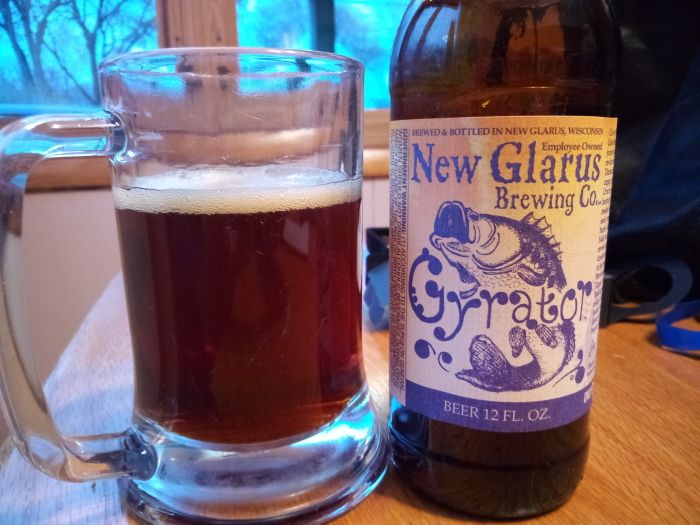The beer's label is interesting and may be the brewery's
first to have an ichthyological theme as I can recall no Walleye Weiss nor a Small Mouth Sour. ("That's good bass!" - Dan Carey) Let's look at the description and start
with this bit: "Dan’s re-discovery of whole cone Diamant hops grown at his
urging in Hallertau, Germany". Wait, wait, wait. Dan Carey, co-owner/brewmaster/whatever
of New Glarus Brewing Company can get a foreign hop grower some 4,200 miles away to do his bidding?! Does Dan
have some compromising photographs?
It vood be a real shame if diese Fotos ended up on der
Internet…
When Carey isn't "urging" German hop growers, he can be found Googling
long lost grains. To wit: "Over ten years of his personal heritage barley
research…"
The blurb on the label then goes on to note that the brew was double
decocted, lagered for 10 weeks, and then took some R&R in the bottle for
another 6 months. This is not just some brief diversion from brewing endless gallons
of Spotted Cow.
If all of this time and effort wasn't enough, Gyrator was
released in 6-packs for the same price as Cow. I don't mean to knock Spotted
Cow here (I like it much more now that the corn has been removed), but rather to
express astonishment that what could have been a fairly expensive limited
edition release available only at the brewery instead sits on store shelves
next to and at the same price as New Glarus' more workaday beers that weren't
made with obscure heritage grains and bespoke hops. I think my sixer cost
$7.49. Craft beers are luxury items, to be sure, but this is like getting an Aston
Martin for the price of a Lexus.
As with most beers, the doppelbock has its own lore. In
short, the story is that the monks of the Paulaner monastery in Munich (or its environs) developed
the rich, malty sweet style in the 17th century to provide their daily
bread in liquid form during Lententide. As with countless other tales about the
origins of beer styles, this one too appears to be blatantly untrue. It seems that the doppelbock was initially brewed for a feast and eventually became a regular part of the monks' diet year-round instead of being reserved for a mere 40-day stretch of cenobitic austerity. Still, it's an engaging bit of legerdemain that is sure to be repeated by beer-loving doofuses like me for some time to come.
Those scents made their way to my tongue with raisin and milk
chocolate being most prominent. Caramel brought up the rear along with a smidgeon
of roasted grain. Fizziness was middle of the road but enough to keep the
sweetness from becoming cloying and give the beer a mild astringency. The
sweetness faded on the finish leaving a little lingering raisin/caramel and allowing a hint of bread to come through. Then a herbal-floral hoppiness kicked in and added a firm dryness which makes you forget that you just drank about half of your recommended daily dose of carbohydrates in one sip.
I was surprised to discover that Gyrator wasn't as sweet as I had
expected it to be. Sure, it was full of rich malt goodness and was chock full
of sweet flavors but the sweetness itself was moderated perfectly. And that toasty bread flavor at the end (a result of decoction, surely) was a treat. In addition,
I really liked how the hops came in and made for a dry finish which pleasingly
contrasted with all of the grainy flavors.
I am not well-drunk when it comes to doppelbocks. My brain's
entry for them is "Something-ator. Oh, it's a big, malty sweet doppelbock!"
But I think I am going to have to revise it to include language about Gyrator
being the Platonic ideal of the style.
Just food pairing: With such a great beer, be sure to pair
it with something a cut above your typical junk food. Since I like to drink
doppelbocks in cold weather, I suggest something warm with my favorite being SuperPretzel
Soft Pretzel Bites filled with Pepper Jack cheese.


No comments:
Post a Comment